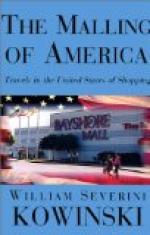The first leisure day after my arrival here, I went to Bunker’s Hill, attended by two persons, who were spectators of the engagement, and were kind enough to point out and explain a number of particulars I wished to be acquainted with, for the purpose of enabling me to form a tolerable idea of this famous action. If general Howe meant only to give the Yankies a specimen of british valour, and his contempt of them and their intrenchment, he succeeded in both.—His enemies on this side the water say, “they gave him a Rowland for his Oliver; that he paid too dear for this victory; that a more prudent general would have found a better place to land the troops, and a safer mode of attack; that the price he paid for this little redoubt ought to have convinced him, he could not afford even to bid for Dorchester heights, if once the Americans got possession of those hills; that he should therefore have fortified them himself; that——” But as nothing is easier than to see all these thats when it is too late, I shall plague you with no more of them, but conclude with an inscription from a monument on the scene of action.
Yours, &c.
“ERECTED, 1794,
By King Solomon’s Lodge of Free Masons,
[Footnote: General Warren was a brother.]
constituted at Charlestown, 1783,
In Memory of
MAJOR GENERAL JOSEPH WARREN,
AND HIS BRAVE ASSOCIATES,
Who were slain on this memorable spot,
June 17th, 1775.
None but they, who set a just value on the
blessings of LIBERTY, are worthy
to enjoy
her.
In vain we toil’d, in vain we fought,
We bled in vain, if you, our offspring,
Want valour to repel the assaults of her
invaders.”
CHARLES TOWN settled 1628. ------------ burnt 1775. ------------ rebuilt 1776.
P. S. I was yesterday introduced to Cox, the celebrated bridge-architect: he is famous for throwing a bridge over waters, where, from the depth or strength of the current, this operation was thought impracticable. He always constructs his bridges of wood, and endeavours to give as little resistance to the water as possible: his supporters are numerous, but slender; and there is an interval between each. He tells me this idea first struck him from reading Aesop’s fable of the Reed and the Oak: the reed, by yielding, was unhurt by a tempest, which tore up the sturdy oak by the roots.
Cox served his apprenticeship to a carpenter; and it was late in life before he attempted bridge-building. He proved his new theory on a small bridge in the country, which answering beyond his most sanguine expectations, he delivered proposals for connecting Boston to the continent, at Charleston, by means of a draw-bridge. His plan was by some supposed to proceed from a distempered brain. It is usual for the ignorant to call a projector insane, when his schemes exceed the bounds of their shallow comprehensions.




